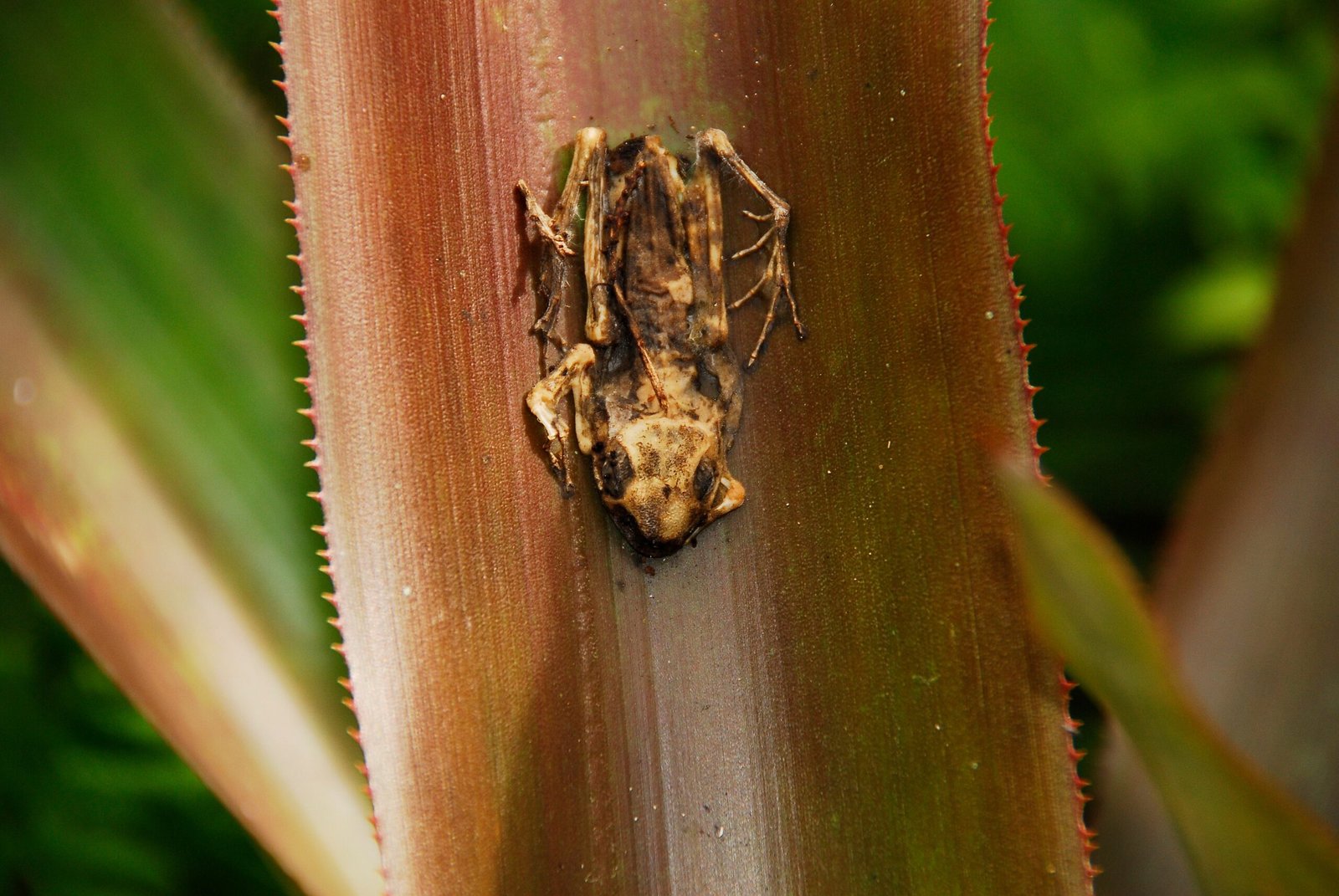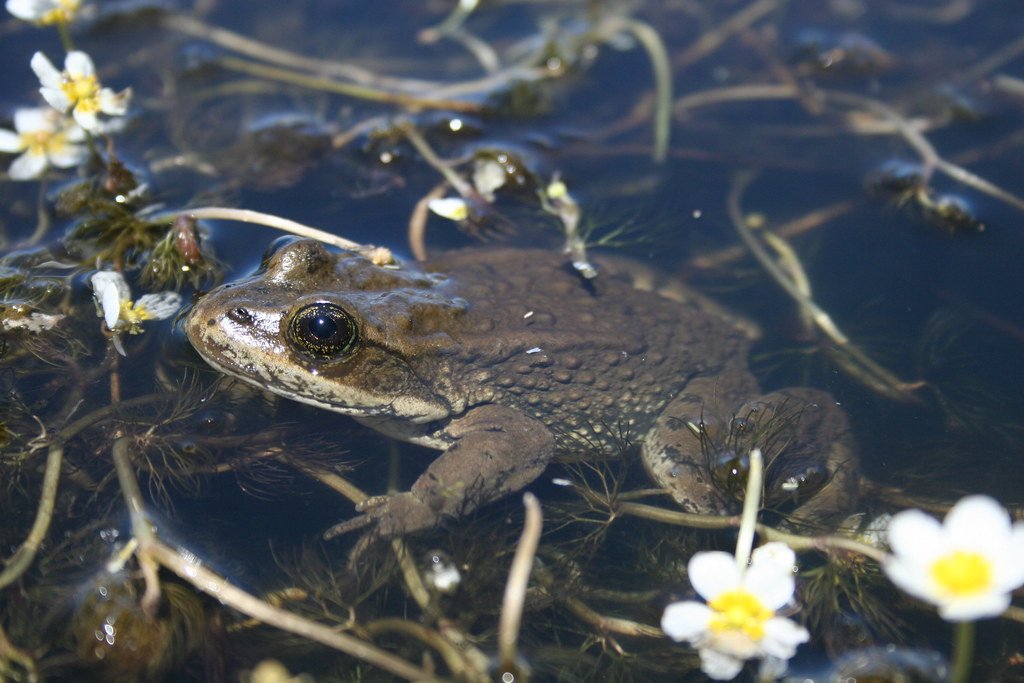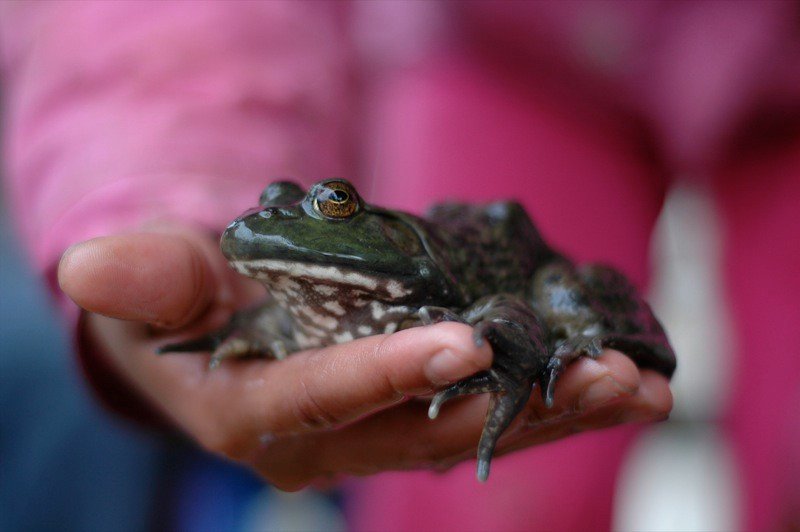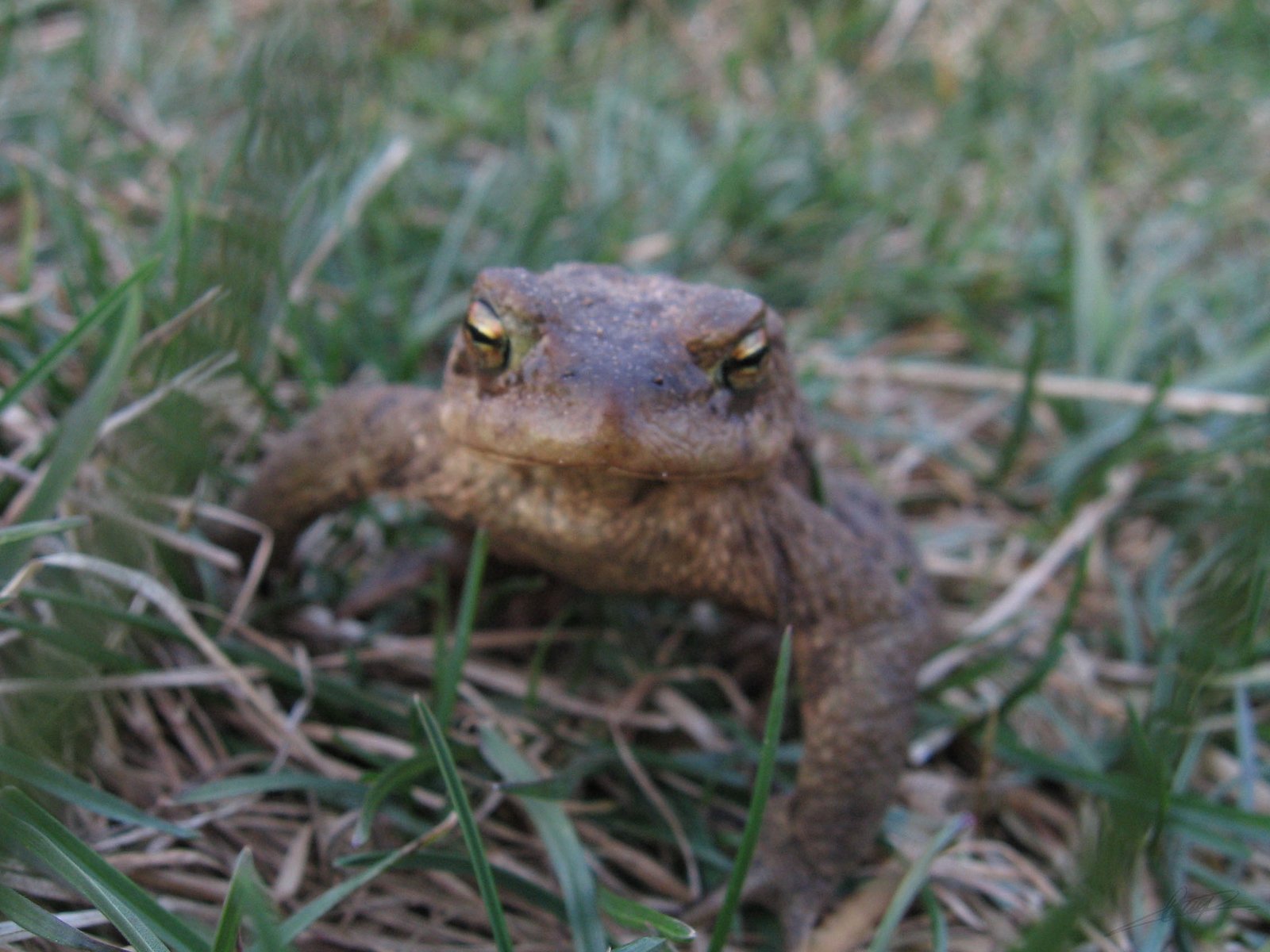Picture this: it’s the dead of winter, temperatures plummet to -20°F, and beneath the frozen ground lies what appears to be a lifeless frog, solid as a rock. Its heart has stopped beating, its blood has turned to slush, and ice crystals have formed throughout its body. By all logic, this creature should be dead. Yet come spring, something miraculous happens – this frozen frog thaws out, takes a breath, and hops away as if nothing happened. This isn’t science fiction; it’s one of nature’s most incredible survival strategies that challenges everything we thought we knew about life and death.
The Winter Warriors Among Us

Not all frogs possess this superhero-like ability to survive being frozen solid. Only a select few species have mastered this extreme survival technique, earning them the title of freeze-tolerant amphibians. The wood frog, gray tree frog, and spring peeper are among the most remarkable practitioners of this biological magic trick.
These amphibians have evolved over millions of years to withstand conditions that would kill most other vertebrates instantly. While their tropical cousins head to warmer climates or burrow deep underground, these hardy species have chosen a different path entirely. They’ve essentially learned to die temporarily and come back to life when conditions improve.
The Science Behind Nature’s Cryogenic Chamber

When temperatures begin to drop, these remarkable frogs don’t panic or migrate – they prepare for what’s essentially controlled death. Their bodies undergo a series of biochemical changes that would make any scientist’s jaw drop. Special proteins begin circulating through their bloodstream, acting like tiny antifreeze agents that protect their vital organs from catastrophic damage.
The process isn’t random or chaotic. It’s a highly orchestrated biological symphony where every cell, tissue, and organ plays its part. Ice formation is carefully controlled and directed to specific areas of the body, while critical organs remain protected by concentrated solutions of glucose and other cryoprotectants.
Think of it like preparing a house for a hurricane – you board up the windows, secure the valuable items, and create safe zones where the most important things can weather the storm. These frogs do the same thing with their bodies, creating biological safe rooms for their most essential organs.
When Hearts Stop Beating and Blood Turns to Ice

As the temperature drops further, something that would terrify any doctor begins to happen. The frog’s heart gradually slows down, beats irregularly, and then stops completely. Its breathing ceases, brain activity flatlines, and blood circulation comes to a halt. Ice crystals begin forming in the spaces between cells, creating a network of frozen architecture throughout the body.
But here’s where it gets truly mind-blowing – this isn’t death as we know it. It’s more like hitting the ultimate pause button on life itself. The frog enters a state called cryptobiosis, where all metabolic processes essentially stop, but the potential for life remains intact.
The ice formation follows specific patterns, almost like nature’s own construction blueprint. Ice crystals form primarily in body cavities and between tissues, but they’re carefully kept away from the insides of cells where they could cause irreversible damage.
The Glucose Miracle: Nature’s Antifreeze

One of the most fascinating aspects of this survival strategy involves glucose – the same simple sugar that gives us energy after eating candy. When these frogs sense dropping temperatures, their livers go into overdrive, converting stored glycogen into massive amounts of glucose. We’re talking about glucose concentrations that would put a diabetic in a coma, yet these frogs thrive on it.
This glucose acts like a biological antifreeze, but it’s far more sophisticated than anything humans have invented. It doesn’t just prevent freezing; it actually protects cellular structures from the damage that ice crystals typically cause. The glucose molecules crowd around vital proteins and cell membranes, forming protective barriers that maintain structural integrity even when surrounded by ice.
Scientists have discovered that glucose concentrations in these frogs can increase by up to 200 times normal levels during freezing. It’s like their entire body becomes a living, breathing sugar cube – but one that can come back to life.
The Liver’s Herculean Task

The liver becomes the unsung hero in this frozen survival story, working overtime to produce the life-saving glucose that will keep the frog viable through winter. This organ transforms from a normal metabolic center into a glucose-producing powerhouse, breaking down stored energy reserves at an incredible pace.
But the liver’s job doesn’t stop at glucose production. It also helps regulate the timing and location of ice formation throughout the body. Special proteins produced by the liver act as ice-nucleating agents, controlling where and how ice crystals form to minimize damage to vital organs.
This process is so energy-intensive that the frog must enter winter with substantial energy reserves. It’s like packing enough supplies for a journey where you don’t know exactly when you’ll return – except in this case, the journey is a months-long suspended animation.
Cellular Protection Mechanisms

At the cellular level, an intricate dance of survival unfolds that rivals any sophisticated defense system. Cell membranes, normally vulnerable to ice damage, become reinforced with special compounds that maintain their flexibility even at freezing temperatures. It’s like upgrading from regular glass to bulletproof glass – the basic structure remains the same, but the durability increases dramatically.
Proteins within cells undergo conformational changes that protect them from denaturation – the process that would normally scramble their structure like cooking an egg. These molecular chaperones work tirelessly to maintain protein integrity, ensuring that when thawing occurs, everything can return to normal function.
The cells also activate specific genes that produce protective compounds only during freezing conditions. This genetic response is so precise that scientists can predict a frog’s freezing survival just by analyzing which genes are turned on or off.
The Heart of the Matter: Cardiac Survival

Perhaps the most remarkable aspect of freeze tolerance is how the heart survives complete shutdown and then restarts perfectly. When frozen, the heart becomes a solid, motionless organ filled with ice crystals. Yet when spring arrives, it begins beating again as if nothing happened – no jump-start needed, no medical intervention required.
The heart muscle cells are particularly well-protected during freezing, surrounded by high concentrations of cryoprotectants that prevent ice crystal formation within the cells themselves. The cardiac electrical system, responsible for coordinating heartbeats, remains intact throughout the freezing period.
Scientists studying this phenomenon have found that the heart’s ability to restart depends on maintaining the integrity of specialized pacemaker cells. These cells act like biological batteries, holding just enough charge to kickstart the entire system when conditions improve.
Brain Freeze: Literal Survival

The frog’s brain presents perhaps the most puzzling aspect of freeze tolerance. This complex organ, with its intricate network of neurons and delicate structures, somehow survives being frozen solid without losing any memories or functions. It’s like shutting down a supercomputer, freezing it in a block of ice, and expecting it to boot up perfectly months later.
Neural pathways remain intact through sophisticated protective mechanisms that prevent ice crystal formation within brain tissue. Special proteins surround neurons, creating protective bubbles that maintain cellular structure even when everything around them turns to ice.
When thawing occurs, the brain doesn’t experience the confusion or memory loss you might expect. The frog awakens with all its survival instincts, memories, and learned behaviors completely intact – ready to hop, hunt, and mate as if no time had passed.
The Thawing Process: Resurrection in Real Time

Spring’s arrival triggers one of nature’s most incredible resurrection stories. As temperatures rise, the thawing process begins from the outside in, like unwrapping a frozen package layer by layer. The frog’s body temperature slowly increases, and ice crystals begin to melt in a carefully orchestrated sequence.
The heart is often the first organ to show signs of life, with irregular beats gradually becoming more regular and strong. Breathing follows shortly after, often starting as barely perceptible movements that gradually increase in frequency and depth. Blood circulation resumes, carrying oxygen and nutrients to tissues that have been dormant for months.
This isn’t a quick process – it can take several hours for a completely frozen frog to return to full activity. But once the process is complete, the frog emerges as if it had simply taken a very long nap.
Temperature Triggers and Seasonal Timing

These remarkable amphibians don’t just randomly decide to freeze – they’re incredibly sensitive to environmental cues that signal the approach of winter. Temperature drops, changes in daylight duration, and even atmospheric pressure changes all contribute to triggering the freeze preparation process.
The timing has to be perfect. Begin the process too early, and the frog wastes precious energy reserves. Wait too long, and sudden temperature drops could cause uncontrolled freezing that leads to death. Evolution has fine-tuned this timing to coincide with the most predictable weather patterns.
Some species can even sense approaching cold fronts days in advance, beginning their metabolic preparations while temperatures are still relatively warm. It’s like having a built-in weather forecast system that’s more accurate than anything meteorologists have developed.
Energy Management During the Long Sleep

Surviving months without food, water, or oxygen requires incredibly efficient energy management. These frogs enter winter having stored maximum energy reserves, but they must make those reserves last until spring without any way to replenish them.
During the frozen state, metabolic processes slow to nearly zero, but they don’t stop completely. Essential cellular maintenance continues at an incredibly slow pace, powered by the carefully hoarded energy stores. It’s like switching a computer to the lowest possible power setting while still maintaining basic functions.
The energy calculations are so precise that even a winter lasting a few weeks longer than normal can mean the difference between survival and death. Climate change is already affecting some populations, with unpredictable weather patterns disrupting the delicate balance these species have maintained for millennia.
Evolutionary Advantages of Freeze Tolerance

This extreme survival strategy didn’t evolve overnight – it represents millions of years of gradual adaptation to harsh northern climates. Frogs that could survive freezing had access to habitats and resources that were completely unavailable to their cold-sensitive relatives.
The ability to freeze and survive means these species can colonize areas with shorter growing seasons, where competition for resources is reduced. They can also remain in prime breeding territories year-round rather than undertaking dangerous migrations to warmer climates.
However, this specialization comes with trade-offs. Freeze-tolerant frogs often have slower growth rates and may be less adaptable to rapid environmental changes compared to their more mobile cousins.
Comparative Strategies: How Other Animals Handle Winter

While some frogs have mastered the art of freezing solid, other animals have developed equally impressive but different strategies for surviving winter. Bears hibernate by slowing their metabolism while maintaining body temperature, turtles bury themselves in mud and absorb oxygen through their skin, and some insects produce their own antifreeze compounds.
What makes frog freeze tolerance unique is the complete cessation of vital signs combined with survival. Most other winter survival strategies involve slowing down life processes, not stopping them entirely. It’s the difference between dimming the lights and turning off the power completely.
Some fish species in Antarctic waters produce antifreeze proteins, but they remain active throughout winter. Arctic ground squirrels can survive partial freezing, but not the complete solid freezing that these frogs endure.
Medical Implications and Human Applications

The study of freeze-tolerant frogs has opened exciting possibilities for human medicine, particularly in organ preservation and transplantation. Currently, donated organs can only survive outside the body for hours, but understanding frog freeze tolerance could extend this to days or even weeks.
Researchers are investigating whether similar protective mechanisms could be applied to preserve human tissues during surgery, reduce damage from strokes or heart attacks, or even enable long-term preservation of blood supplies. The glucose-based protection system has already inspired new approaches to cryopreservation.
Cancer treatment could also benefit from this research, as understanding how cells survive extreme stress might lead to better ways to protect healthy tissues during chemotherapy and radiation treatment.
Climate Change Impacts on Freeze-Tolerant Species

Climate change poses unique challenges for these remarkable survivors. Warmer winters might seem beneficial, but these frogs have evolved to depend on consistent freezing periods for their life cycles. Unpredictable freeze-thaw cycles can be more dangerous than consistently cold temperatures.
Some populations are already showing signs of stress from changing winter patterns. Earlier spring thaws can trigger awakening before food sources are available, while late cold snaps can catch frogs unprepared. The delicate timing that has worked for millennia is being disrupted.
Habitat changes also affect the microenvironments where these frogs typically freeze. Loss of leaf litter, changes in snow cover, and altered soil conditions all impact the insulation and protection these species need for successful winter survival.
Conservation Efforts and Research Challenges

Protecting freeze-tolerant frog species requires understanding not just the animals themselves, but their entire winter ecosystem. Conservation efforts focus on preserving the specific microhabitats where successful freezing occurs, including leaf litter layers, fallen logs, and soil conditions that provide proper insulation.
Research on these species presents unique challenges since studying animals that are essentially dead for months requires specialized techniques and enormous patience. Scientists must wait for natural freeze-thaw cycles or create controlled laboratory conditions that accurately replicate wild freezing experiences.
Long-term monitoring programs track population changes and survival rates across different winter conditions, helping scientists understand how environmental changes affect freeze tolerance success rates.
The Mystery Continues: Unanswered Questions

Despite decades of research, many aspects of freeze tolerance remain mysterious. Scientists still don’t fully understand how some cellular structures survive ice crystal formation while others would be destroyed. The precise mechanisms that control ice nucleation and growth continue to puzzle researchers.
Questions about the upper limits of freeze tolerance persist – how long can these frogs remain frozen and still survive? Some laboratory studies suggest months, but wild populations might face even longer frozen periods. The relationship between freezing duration and survival success rates needs more investigation.
The evolutionary history of freeze tolerance also holds secrets. Did this ability evolve once and spread to different species, or did multiple frog lineages independently develop similar strategies? Genetic studies are beginning to provide answers, but the complete picture remains elusive.
Future Research Directions

Scientists are now using advanced genetic techniques to identify the specific genes responsible for freeze tolerance, opening possibilities for understanding how this trait could be enhanced or potentially transferred to other species. CRISPR gene editing technology might eventually allow researchers to study freeze tolerance mechanisms in unprecedented detail.
Nanotechnology research is exploring how to create artificial versions of the protective compounds these frogs produce naturally. These synthetic alternatives could have applications in medicine, food preservation, and materials science.
Climate modeling studies are attempting to predict how changing environmental conditions will affect freeze-tolerant species over the coming decades, informing conservation strategies and habitat protection efforts.
The story of freeze-tolerant frogs represents one of nature’s most extraordinary survival strategies, challenging our understanding of life and death while offering insights that could benefit human medicine and technology. These humble amphibians have mastered something that seems impossible – the ability to die and return to life, season after season, with nothing more than the changing temperature as their guide. As we face our own environmental challenges, perhaps there’s wisdom to be found in their patient endurance and remarkable resilience. What other secrets might these frozen survivors still be hiding?




